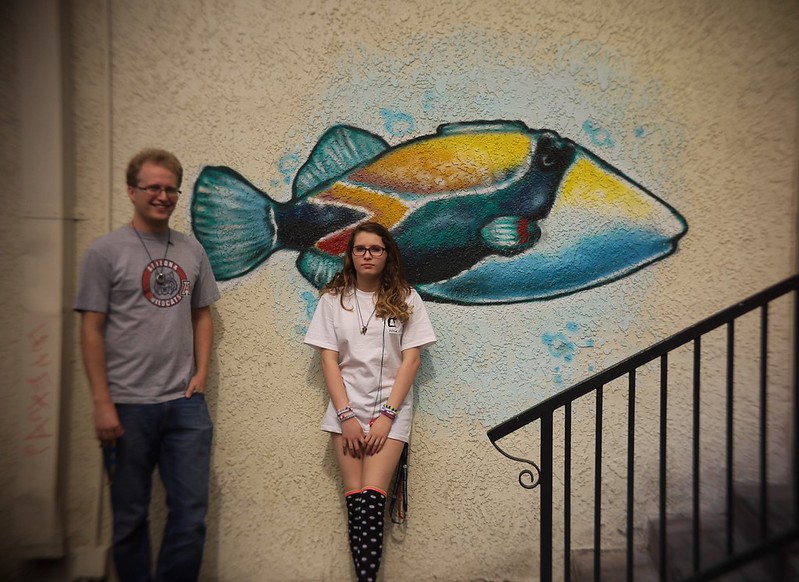charjohncarter
Mentor
I can't see why it would matter, since with an SLR you are focussing through the lens you automatically take any focus shift into account. With a rangefinder you're relying on the RF to focus so any focus shift is a bad thing.
Ah, but the question and I'm treading on the OP's thread here: is focus shift greater, lesser or no difference from RF lenses. Still, the trend would be to get a fast lens (with a large piece of glass up front), and maybe some powerful ND filters if you wanted vignetting with a fast lens. Or am I wrong?
So, is that a reasonable way to create vignetting (without those stupid PS tricks) with both RF and SLR lenses.
michaelwj
----------------
I'm in the "Doesn't bother me, I'll just fix it in post" camp.
Although "fix it in post" is more often adding it than removing it...
Michael
Although "fix it in post" is more often adding it than removing it...
Michael
goamules
Well-known
I use vignetting at times. Especially with ancient Petzvals for Large format. I prefer the type caused by lens design field curvature or coma or spherical aberrations. As apposed to mechanical or software vignetting.
Here are a couple small ones, from a tiny Kern 25mm/1.5. I'll take what it gives.


Here are a couple small ones, from a tiny Kern 25mm/1.5. I'll take what it gives.


defconfunk
n00b
When I print in the darkroom I tend to vignette. For most of my photos is works nicely. I usually don't add it in my digital photos, but for many of them I proably should start doing it.
My main digital zoom vignettes a full stop right in the corners when I'm wide open, it doesn't bother me in the slightest. I prefer my lenses to not vignette much. I prefer doing my own vignetting, but it isn't something I lose any sleep over.
My main digital zoom vignettes a full stop right in the corners when I'm wide open, it doesn't bother me in the slightest. I prefer my lenses to not vignette much. I prefer doing my own vignetting, but it isn't something I lose any sleep over.
anjoca76
Well-known
I guess for me the answer is: it depends. As a musician, I feel vignetting is much like reverb on vocals. When tastefully added, it adds a lot of color and isn't distracting. It's only bothersome when it's overly noticeable and/or is used to hide flaws. Then it becomes annoying.
I personally like vignetting the best when it is organic. My 21mm vignettes a bit sometimes, and I think for the most part it adds character.
Anyway, no, definitely not a dirty word.
I personally like vignetting the best when it is organic. My 21mm vignettes a bit sometimes, and I think for the most part it adds character.
Anyway, no, definitely not a dirty word.
JoeV
Thin Air, Bright Sun
I'm finding a subtle post-production vignetting to be a useful effect with certain subject matter, just like selective focus can help in certain images by focusing the attention of the viewer onto the principal subject matter. Being a post-production effect, I'd rather have the choice of applying it when I need it, rather than the lens dictating to me.
~Joe
~Joe
Steve Bellayr
Mentor
I look at it this way: I try not to shoot at f2.0 or f2.8 where most of the lenses vignette. When I am shooting at those stops I am generally in a dark lit area and the corners are black. When I photograph people I am at f4.0 or f5.6 if vignetting occurs it does not matter in portraits but actually may enhance the photo. With landscapes one should be at f. ll or f.16 where vignetting does not occur. Consider the photograph also. There is a sweet spot that the eyes go to which more often than not is towards the center. Fall off in the corners is seldom seen even if present.
goamules
Well-known
I do the same things Steve.
I am a lens scholar, so I like studying and using the native differences of lens types. I've not seen any post production effects that try to replicate lens aberrations look right to me. Spherical aberration in a soft focus lens has a soft flare, but underlying sharpness. Petzval swirl only happens at a certain depth of field, try doing that with software. Coma, curved field, and more are part of the fun of using different lenses. If we wanted everything to have identical flatness, resolution, contrast, and color rendering we might as well all shoot cell phone cameras. Then we could apply "Old Timey Kodak" filters through instagram and call it done.
I am a lens scholar, so I like studying and using the native differences of lens types. I've not seen any post production effects that try to replicate lens aberrations look right to me. Spherical aberration in a soft focus lens has a soft flare, but underlying sharpness. Petzval swirl only happens at a certain depth of field, try doing that with software. Coma, curved field, and more are part of the fun of using different lenses. If we wanted everything to have identical flatness, resolution, contrast, and color rendering we might as well all shoot cell phone cameras. Then we could apply "Old Timey Kodak" filters through instagram and call it done.
David Hughes
David Hughes
Hi,
Are there any lenses that don't vignette when wide open?
Equally are there any lenses that don't improve as the aperture shuts down then start to deteriorate as it continues to shut down?
I ask as I try to avoid the extremes of aperture on all lenses.
And if this paragon exists, can I afford it?
Regards, David
Are there any lenses that don't vignette when wide open?
Equally are there any lenses that don't improve as the aperture shuts down then start to deteriorate as it continues to shut down?
I ask as I try to avoid the extremes of aperture on all lenses.
And if this paragon exists, can I afford it?
Regards, David
lxmike
M2 fan.
goamules
Well-known
Hi,
Are there any lenses that don't vignette when wide open?
Equally are there any lenses that don't improve as the aperture shuts down then start to deteriorate as it continues to shut down?
I ask as I try to avoid the extremes of aperture on all lenses.
And if this paragon exists, can I afford it?
Regards, David
Plenty. Vignetting is caused by using too short a focal length lens for the needed coverage. 35mm to 50mm is just starting to be the focal length needed to cover a 35mm frame, with some designs. Some designs have more angle of view, and edge aberrations start later, than others. But I'd wager any lens longer than 50mm won't vignette. By 85mm you are using the center part of the coverage, and the "edges" are way off the frame.
Your question about lenses improving as they are stopped down is related to optical theory. They almost all do. It's just the way it works. But some designs are very sharp wide open, and the most noticeable change as you stop is depth of field. A Petzval for example, but there aren't any for 35mm (Sorry, the new Lomo is not a Petzval from the diagrams they advertise). But a Petzval has a very narrow angle of view. In the 1800s, a photographer would buy one that was much longer than you'd think you need, just so he could use the center section of the coverage. That way they avoided the edge aberrations. Today with LF people want the edge aberrations such as swirl. So they use shorter Petzvals than they would have in the 1800s. Opposite with small format. We want to have our cake and eat it too. We want short "wide angle" lenses that have no vignetting or edge aberration. That's been very hard for a lens designer to make.
mdarnton
Well-known
I don't like vignetting if it's too obvious, or not specifically right for the picture. Just darkening the extreme corners indiscriminately doesn't really work for me, but using it in a controlled way as a device to subdue a whole background a bit to draw one's attention to the subject without becoming an obvious distraction on it own does work. And just because you can do it, it doesn't mean you should always do it.
In my opinion, it's best when you don't notice it at all because it's flowing naturally out of what's already there.
In my opinion, it's best when you don't notice it at all because it's flowing naturally out of what's already there.
jmilkins
Digited User
I like it when it is a character element of the lens. I don't like it when I've misaligned the lens hood.
For example I like it enough to have set the new firmware update for the GR to default to emulate the lens character of the original GR film cam ;-)
And if Ricoh has built that in as an "upgrade" that tells me there are enough nostalgic folks out there to warrant it.
For example I like it enough to have set the new firmware update for the GR to default to emulate the lens character of the original GR film cam ;-)
And if Ricoh has built that in as an "upgrade" that tells me there are enough nostalgic folks out there to warrant it.
David Hughes
David Hughes
Plenty. Vignetting is caused by using too short a focal length lens for the needed coverage. 35mm to 50mm is just starting to be the focal length needed to cover a 35mm frame, with some designs. Some designs have more angle of view, and edge aberrations start later, than others. But I'd wager any lens longer than 50mm won't vignette. By 85mm you are using the center part of the coverage, and the "edges" are way off the frame.
Your question about lenses improving as they are stopped down is related to optical theory. They almost all do. It's just the way it works. But some designs are very sharp wide open, and the most noticeable change as you stop is depth of field. A Petzval for example, but there aren't any for 35mm (Sorry, the new Lomo is not a Petzval from the diagrams they advertise). But a Petzval has a very narrow angle of view. In the 1800s, a photographer would buy one that was much longer than you'd think you need, just so he could use the center section of the coverage. That way they avoided the edge aberrations. Today with LF people want the edge aberrations such as swirl. So they use shorter Petzvals than they would have in the 1800s. Opposite with small format. We want to have our cake and eat it too. We want short "wide angle" lenses that have no vignetting or edge aberration. That's been very hard for a lens designer to make.
Exactly my point. I don't worry about it because it seldom happens. And when it does it's a small price to pay to get the shot wide open etc. But most of the time I'm not shooting wide open.
Regards, David
semilog
curmudgeonly optimist
It depends on what I'm shooting.
The subjects where low vignetting is important tend to be the same shots where I'm stopping down so that vignetting is not a big problem. And it can look fantastic in some pictures.
The subjects where low vignetting is important tend to be the same shots where I'm stopping down so that vignetting is not a big problem. And it can look fantastic in some pictures.
Jonik
Member
sometimes i like it because it can guide/limit the viewer's eye.
Steve M.
Mentor
One does not get into the Museum of Modern Art and other of the world's top museums unless one is a great photographer. Atget was one of the best ever.
Like all pictorial effects, vignette can be an asset or a liability, depending on what one has in mind w/ the photo. I think it's only an issue if it looks like this :]
Note to self....always ck a new hood w/ a ground glass and a loupe before shooting film in the camera.
Like all pictorial effects, vignette can be an asset or a liability, depending on what one has in mind w/ the photo. I think it's only an issue if it looks like this :]
Note to self....always ck a new hood w/ a ground glass and a loupe before shooting film in the camera.
Attachments
anjoca76
Well-known
When I don't notice it, or if it looks natural, I tend to like it. But I know plenty of photographers who use it as a crutch--you see it in nearly all their images. Then it just looks lazy, as if you are trying to add drama that isn't there.
Am I guilty of vignetting? Yes. But I try to avoid it or use it sparingly. I have a couple lenses that do it on their own when wide open, which I like.
Am I guilty of vignetting? Yes. But I try to avoid it or use it sparingly. I have a couple lenses that do it on their own when wide open, which I like.
barnwulf
Well-known
I like vignetting on some types of photos and I do use at least some on a lot of my photos, but it really depends on the photo. I generally don't like it with color images. - jim
It's a strange thing.......
If I shoot using my D800 or Fuji X-Pro, I seldom get much vignetting as the lenses I have seem to be less prone than those I use with my film gear. Consequently, I tend to add some vignetting to my digital output - particularly if I've converted it to mono.
If I shoot film using my Bessa R4M (with either my 21mm/f4 or 35mm/f1.2 Voigtlanders) I tend to live with the results pretty much "as is" - though both lenses do vignette a bit.
I guess I've become used to seeing some level of vignetting down the years to the point where a photo looks odd if there isn't any (or at least there isn't the "usual amount").
If I shoot using my D800 or Fuji X-Pro, I seldom get much vignetting as the lenses I have seem to be less prone than those I use with my film gear. Consequently, I tend to add some vignetting to my digital output - particularly if I've converted it to mono.
If I shoot film using my Bessa R4M (with either my 21mm/f4 or 35mm/f1.2 Voigtlanders) I tend to live with the results pretty much "as is" - though both lenses do vignette a bit.
I guess I've become used to seeing some level of vignetting down the years to the point where a photo looks odd if there isn't any (or at least there isn't the "usual amount").
Share:
-
This site uses cookies to help personalise content, tailor your experience and to keep you logged in if you register.
By continuing to use this site, you are consenting to our use of cookies.



